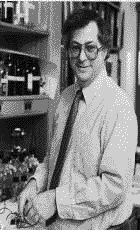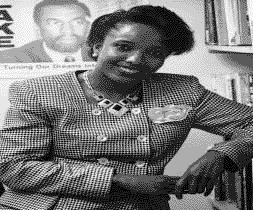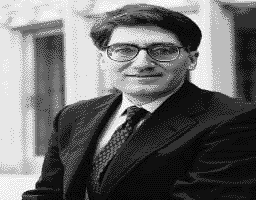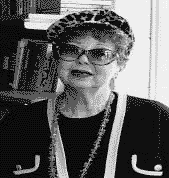Faculty
salaries "Doing Better"
Full professors earned 4.7
percent more in 1997-98
Following a meager performance in 1996-97, faculty salaries nationwide are looking up, according to an annual report by American Association of University Professors report aptly titled "Doing Better." In 1997-98, average faculty salaries increased 3.4 percent nationwide, twice the rate of inflation, the largest real increase in average salaries in a decade.
Full professors at Princeton saw their salaries rise 4.7 percent. According to the report, in 1997-98, they made on average $110,300, while associate professors earned $65,400, assistant professors $51,000, and instructors $43,100. Those salaries compare, respectively, to national averages at doctoral-level institutions of $79,346, $55,403, $45,567, and $33,649. Of the Ivies, only Harvard paid its full professors more ($116,800) than Princeton. Stanford University paid its full professors an average $111,000, just slightly better than Princeton. Princeton's average salary for all professorial ranks was $86,700, versus $54,241 nationwide.
Compared to the salaries of full professors at other doctoral-level institutions, Princeton's full professors are in the top 5 percent; associate professors are in the top 10 percent; and assistant professors are in the top 20 percent, said Ernst Benjamin, AAUP's director of research.
"Doing Better" comes a year after "Not So Good," the AAUP's report for 1996-97, when professors received 3 percent raises in a year with a 3.3 percent rate of inflation.
Faculty salaries are still not good enough, according to "Doing Better." "Salaries improved this year due primarily to the low rate of inflation, but they are still well below the level necessary to recruit and retain first-rate faculty," said Benjamin. Faculty salaries adjusted for inflation remain about 4 percent below those of 25 years ago. Faculty salaries peaked in 1972, then slipped badly, partly recovered in the late 1980s, and have see-sawed in the 1990s, he explained. They are also "42 percent lower than comparably educated professionals," he added.
Princeton, however, doesn't have a problem recruiting faculty members, said Dean of the Faculty Joseph H. Taylor. "We don't win them all when we compete, but we win our share," he said. "We are not often turned down for reasons of money."
Nationwide, salary disparities among types of institutions and between men and women persist. Men earn more than women at all types of four-year institutions. According to Benjamin, "Women are substantially less likely" to hold full professorships at doctoral universities (and universities generally), and those women who are full professors receive salaries that are 8-10 percent lower than men's.
Taylor said he doesn't believe there is a difference between the average salaries for women and men who are full professors at Princeton. If there is any difference, he added, it is because women are generally younger than their male counterparts.
The AAUP's report was based on a survey of 1,839 institutions -- 995 public, 400 independent, and 444 church-related.
Average Salaries, 1997-98
(All doctoral level institutions/Princeton)
FULL PROFESSOR: $79,346; $110,300
ASSOCIATE: $55,403; $65,400
ASSISTANT: $46,567; $51,000
INSTRUCTOR: $33,649; $43,100
Levine leaves for presidency of Rockefeller University
 |
Arnold J. Levine, the Harry C. Wiess Professor in the Life Sciences, has left Princeton to become the president of Rockefeller University in New York City. He started on September 1 and officially will take over as president in November, succeeding Torsten N. Wiesel. A leading cancer researcher and the founder of the molecular biology department, which he chaired for its first 12 years (1984-96), Levine said he is most proud of the "environment we created where education and research could flourish together, and people are happy in doing their work." He said he looks forward to the challenge of leading Rockefeller, which has a $140 million annual budget, a $900 million endowment, and a faculty of 75. Rockefeller specializes in biomedical research, offering a Ph.D. in biology and a combined M.D.-Ph.D. degree; there are no undergraduates. Levine added that he will miss collaborating with undergraduates -- 130 of whom worked in his lab during his 25 years at Princeton. |
 |
Bess Ward, a professor of geosciences who joined the faculty in July, studies how bacteria in the oceans absorb nitrous oxide, a gas that contributes to the greenhouse effect and also destroys atmospheric ozone. Ward conducts her field research in Antarctica. There, she takes samples from Lake Bonney, a body of salt water locked under 12 feet of ice. Lake Bonney's chemistry differs from that of the oceans in a crucial respect: for reasons that scientists have yet to fathom, its bacteria do a poor job of taking in nitrogen. Ounce for ounce, water from Lake Bonney holds 50,000 times more nitrous oxide than does seawater. Bacteria is the only life form in Lake Bonney, and understanding the lake's simple ecosystem can advance scientists' knowledge of the vastly more complex ecology and chemistry of the oceans. Ward wants to know why the lake's bacteria don't do the job of their ocean counterparts, whose absorption of nitrous gases is crucial to regulating the earth's global temperatures. |
Ward, who before coming to Princeton chaired the marine sciences department at the University of California, Santa Cruz, is a biogeochemist -- a biologist who studies geology and chemistry. Two years ago, at age 42, she became the youngest scientist and only woman to receive the G. Evelyn Hutchinson Award for outstanding research in oceanography.
She uses the techniques of genetic research to study the DNA of bacteria in the environment. The first step in studying an organism is knowing what you're looking at -- "Identification is the most basic question," says Ward. In 1986, while working at San Diego's Scripps Institution of Oceanography, she began scrutinizing bacteria's DNA molecules piece by piece to find genes that served as identification tags. Before marine biologists began using this technique, they identified bacteria by examining them under a microscope, observing what they ate, what they excreted, and how long they lived -- a process that took much longer and was less accurate.
In her office at Santa Clara during an interview last spring, Ward sketched the outline of Lake Bonney on a piece of paper. "I've always loved to work in the field," she said. She has led research cruises to study the Pacific Ocean and the Arabian Sea but balked at her first invitation to study in Antarctica: "I never wanted to be that cold." Even in the summer months (November to February), the air temperature rarely rises above freezing. She visited Antarctica for two months each in 1992 and 1994. She and her colleagues slept in sub-freezing tents near Lake Bonney and hauled 50-liter containers of water from the lake through a shaft in the ice. She expects to make at least two more trips.
-- Brandon Brown
Annals of Research: What professors are exploring
 |
When whites and blacks agree Three years ago I started collecting data for a book titled, When Whites and Blacks Agree: Fairness in Opportunities. I intended to write a single book that would challenge the conventional wisdom about the degree of racial polarization on public-policy issues such as affirmative action. I started with the premise that there is far more agreement among racial groups in America than national surveys now indicate. I felt that national surveys were too loaded with emotionally charged code words. Therefore, I commissioned a national survey that avoided asking people what they thought about hot-button topics like affirmative action. Rather, respondents were asked to make decisions about individuals described in various scenarios, including college admissions and jobs and promotions. |
Instead of one book, I now expect to produce at least two. The first one (for which I hope to complete a draft this fall) focuses on fairness in educational opportunities. I found widespread agreement among Americans over who should get the last slot at a state university when two unequal applicants compete for that same slot. The people surveyed expressed overwhelming support for the underdog whenever the students were from the same racial group. Most Americans do not think that colleges and universities should select their student bodies solely on the basis of grades and test scores. This book questions whether state universities have lost sight of their original missions to unlock the doors of social and economic opportunities for their citizens.
A second book deals with agreement on issues relating to jobs and promotions. A third book continues my research on the electability of black candidates in majority-white electorates.
 |
The power of the courts The central question of American constitutional theory concerns the justification of unelected judges to invalidate as unconstitutional laws and policies enacted by elected representatives. Throughout our nation's history the Supreme Court has exercised this power of judicial review to shape law and public policy in the most important and controversial areas. The Supreme Court exercised judicial review to protect the institution of slavery in the 1856 Dred Scott decision and to strike against racial segregation in the 1954 case of Brown v. Board of Education. From 1905 to 1937, courts struck down a variety of state and federal laws protecting workers against exploitation by employers; since 1965 they have invalidated laws restricting contraception and abortion. Recently, the Supreme Court declared that "set aside" programs that benefit racial minorities in bidding for government contracts are unconstitutional. |
Some people see judicial review as an unjust departure from the principle of democratic self-government. Others claim that more or less expansive judicial review is required to protect individuals and minorities from the depredations of legislative majorities.
In Natural Law and Judicial Review, which Oxford University Press will publish in 1999, I argue that sound principles of justice and political morality neither require nor forbid judicial review. Though it is perfectly reasonable to desire a judicial check against "the tyranny of the majority," we should recognize that judicial review, unless its scope is effectively limited, creates the danger of "government by judiciary." And I point out that though a court empowered to strike down legislation may indeed use that power to serve the cause of justice, it may, as the historical record shows, also use that power to do great injustice.
 |
The making of community
Until the advent of the modern age, family, homestead, and community formed part of a cluster of human togetherness. Faith in their indispensability and permanence was profoundly challenged with industrialization as it broke up the sense of togetherness with the spread of personal mobility and technology. Many people, therefore, considered community anachronistic and inimical to the modern ethos. While plausible, this conclusion was nonetheless premature. For community survives as an ideal in many contemporary settings, and it deserves reexamination for its viability in today's circumstances. |
Identifying the basic components of community is one of the goals of my empirical investigation into the evolution of a community-in-the-making in Twin Rivers, New Jersey, the first Planned Unit Development in New Jersey, which I have been monitoring, at given intervals, for more than two decades.
This proved an excellent opportunity to trace the formation of a collective identity, from stage one, when there existed only houses, streets, and open spaces, to stage two, when 10,000 residents had settled in. Three separate surveys, the latest completed last spring, permitted me to track the changes in attitudes and behaviors over the decades and to offer provisional answers to several critical questions: How does a collection of strangers go about creating the rudiments of community? Who are the prime movers in this process? What are the pitfalls and impediments at different stages? Who needs community most and least in our time?
Creating community is a long and difficult process at whose heart stands the dynamic tension between individual desires and collective obligations. How communities utilize this tension for a productive outcome is the key question my research seeks to answer.
CHANGES: With a new publishing year at PAW come several changes in the magazine's editorial staff.
Wes Tooke '98, one of last year's On the Campus writers, has joined us as an assistant editor, with primary responsibility for Sports. Tooke, who majored in political economy and wrote a creative nonfiction thesis on the Appalachian Mountain Club, is also helping with Notebook in the absence of Kathryn Greenwood , on maternity leave through the rest of the year.
Former associate editor Lolly O'Brien has been named managing editor. She will continue editing In Review and developing alumni profiles. Associate editor Lesley Carlin '95, who begins her second year of editing Class Notes and Memorials, also assumes responsibility for PAW's Website.
ANNUAL GIVING: This year's AG effort brought in $31,417,263 for the university's coffers and set a record for the third year in a row. The participation rate of 60.2 percent was the second year in row it topped 60 percent, and 10 classes -- 1917, 1920, 1922, 1928, 1935, 1938, 1939, 1943, 1948, and 1953 -- had rates better than 80 percent. Leading the pack in total dollars was 1963, with $4,000,063 followed by 1958 ($3,272,758), 1953 ($2,702,892), and 1948 ($2,548,040). AG totals are counted in the five-year Anniversary Campaign for Princeton, which as of June 30 had raised $643 million toward its goal of $750 million. The campaign concludes June 30, 2000. For more on Annual Giving results, see the AG Webpage, at www.princeton.edu/One/agpage.html.
Safer Sex vs. Abstinence: Teaching safer sex might be better than teaching abstinence, according to Professor of Psychology John B. Jemmott III, who reported results of the first HIV prevention study to compare the effects of educating teenagers about safe sex with the effects of educating them on abstinence in the Journal of the American Medical Association. The results suggest that while both approaches affect sexual behavior in the short term, over the long term the safer-sex program not only increases condom use but may decrease the frequency of sexual contact in some groups.
Penny-size CD: Sound impossible? Enter Professor of Electrical Engineering Stephen Y. Chou, who has created a compact disc that has a bit size 800 times smaller than current CDs and that can hold the information of 30 conventional five-inch discs in a disc the size of a penny. Chou's CD is read by an atomic-force microscope: a tiny silicon needle doesn't actually touch the CD but senses the shape of its surface. The compact disc, which will not be commercially available for several years, said Chou, might be used for storing music, maps, books, and other information. What will take time is not manufacturing the disc, but developing disc drives the size of a wrist watch.
Greenhouse effect: Global warming may be reducing the ocean's ability to absorb excess atmospheric carbon dioxide, according to a team of scientists led by Professor of Geosciences Jorge L. Sarmiento and carried out jointly with scientists from the Geophysical Fluid Dynamics Laboratory who studied the Southern Ocean. Their research appeared in Nature. The world's oceans act like a carbon dioxide sponge: Atmospheric carbon dioxide dissolves in the water and gets carried into the deep ocean by circulation. Previous estimates of how steeply we must decrease carbon dioxide emissions to slow global warming have assumed the oceans remain constant over time. The results of this work suggest that the oceans may respond to global warming with changes in salinity, vertical circulation patterns, and biotic activity.
|
Carl A. Fields, the first African-American dean at Princeton or any other Ivy League university, died in New York City on July 20. He was 79. In an education career spanning more than 40 years, Fields came to Princeton in 1964 as assistant director of student aid. In 1968 he became assistant dean of the college, charged with increasing the enrollment and retention of African-American and other minority students. During an era of racial unrest on many college campuses, Fields at Princeton played the role of "an interpreter," as he once put it to PAW, fostering dialogue between black and white students and between blacks and university administrators. He was instrumental in negotiations with members of the Association of Black Collegians (ABC) during their 1969 occupation of New South Building. |
Fields received the University Service Award from the Association of Black Princeton Alumni and the Alumni Council Award for Service to Princeton, and was long active with the Education Center at Blairstown.
In 1971 he left Princeton to serve as the planning officer at the University of Zambia. As the founder of the African Technical Educational Consultant Service, from 1974 to 1984 he assisted schools and nonprofit organizations in promoting educational development in minority communities. In 1984 he became the administrator of Riverside Church, in New York City, a post he left last year to head the Bishop Tutu Southern African Refugee Scholarship Fund.
Fields was born in Ohio, grew up in Brooklyn, and was a 1942 graduate of St. John's University. While serving in the Army during World War II he earned a Bronze Star for valor at the Battle of Saipan. He held a Ph.D. in educational philosophy from Philathea College, in Ontario.